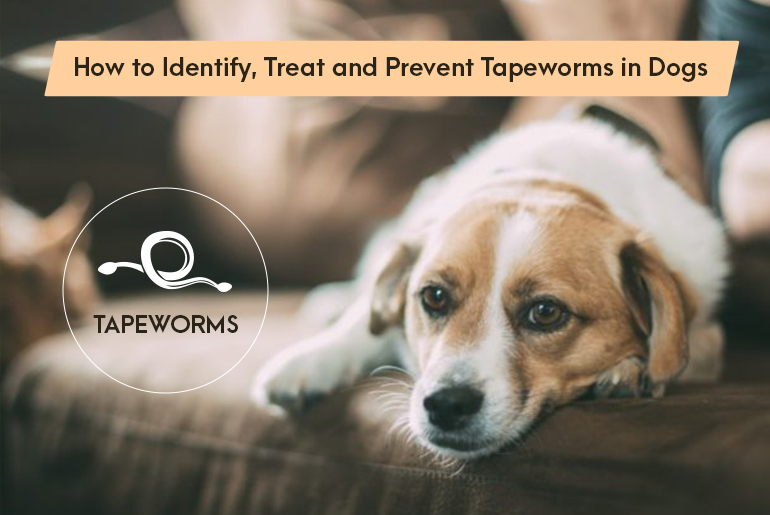You’ve probably heard of tapeworms or dealt with them if you have a pet. Although worms can harm a dog’s overall health and cause serious gastrointestinal problems, tapeworm infestations in dogs are not usually considered dangerous or life-threatening.
Tapeworm infestations are common in dogs, but with the help of your veterinarian, they can be treated safely and effectively. In this blog, learn how to identify, treat, and prevent tapeworms in your dog.
[Also Read ] 6 Most Common Dog Diseases
What are Tapeworms?
Tapeworms are parasites that live in the intestine. Like roundworms, hookworms, and whipworms, this flat, segmented worm can be found in dogs, cats, humans, and a variety of other species all over the world. A tapeworm infestation is referred to as Cestodiasis in medicine and the most common tapeworm species is Dipylidium Caninum.
If you’ve ever seen photos of tapeworms, you’ve probably felt an immediate sense of disgust. Even though they are repulsive to look at, it is critical to recognize parasite signs so that your dog can be treated before the worms cause damage to his/her body. The good news is that most tapeworm treatments are both effective and simple.
Tapeworm Diagnosis and Treatment in Dogs
Have you ever wondered why your veterinarian requires you to collect and bring in an excreta sample for an annual physical? That is how he checks for worms. The test will determine whether tapeworms are present in your dog’s anal sac or feces. Although false negatives can occur, the tapeworm test is dependable, and the majority of results are conclusive. Following treatment, both animals and humans have a very good prognosis.
Tapeworms are treated with praziquantel, a common drug that can be taken orally or by injection. The drug dissolves the tapeworm within the intestine. In general, the drug has no negative side effects. Other effective tapeworm removal treatments include chewable, spot-on, and tablets. Moreover, tapeworm, hookworm, roundworm, and whipworm are all parasites that can be treated at the same time with a single treatment. Recommended treatments are Drontal All-Wormers for Dogs, Panacur Oral Suspension, and Cazitel Plus Tablets for Dogs
To ensure that the tapeworms are completely gone from your dog’s body, CanadaPetCare recommends that you administer the suggested or advised treatment. Also, before attempting any treatment on your own, consult with your veterinarian to ensure proper diagnosis and treatment options.
Tapeworm Prevention in Dogs
Keeping your dog flea-free is the best way to avoid a tapeworm infestation. To prevent recurring infestations, the surrounding environment must also be treated. The following steps are recommended:
- Control fleas on your pet as well as in their indoor and outdoor environments.
- If your pets have tapeworms, have them treated as soon as possible by a veterinarian.
- Clean up after your pet, especially in public places like playgrounds and parks. Bury the feces or place it in a plastic bag and throw it away.
- Prevent children to play in areas contaminated with pets or other animals
- Teach children to wash their hands after playing with dogs and cats, as well as after playing outside.
- Maintain a safe distance between the dog and dead insects, visible worms, and garbage.
This information is intended to educate you about tapeworms in dogs and is not intended to replace a veterinary diagnosis or consultation. If you suspect your dog has tapeworms or other parasites, contact your veterinarian right away to schedule an examination and ensure that your dog receives the safest and most effective treatment.





